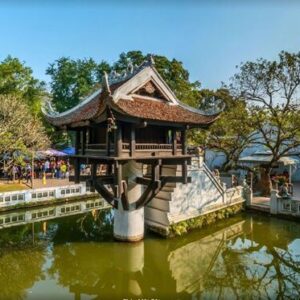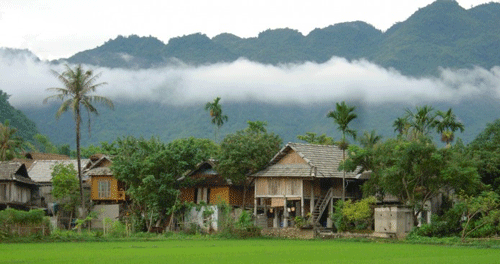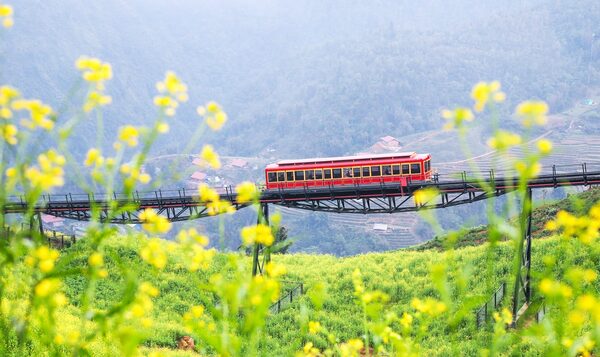After half a century of being classified as a national historic site in 1962 and seven years of being recorded in the Vietnamese Guinness Book as the pagoda with the most unique architecture in the country, Mot Cot (One-Pillar) Pagoda in Vietnam was recently recognized as “The Pagoda with the Most Unique Architecture in Asia” by the Asia Record Organization. This once again affirmed the nearly-thousand year old pagoda’s historical and architectural values.
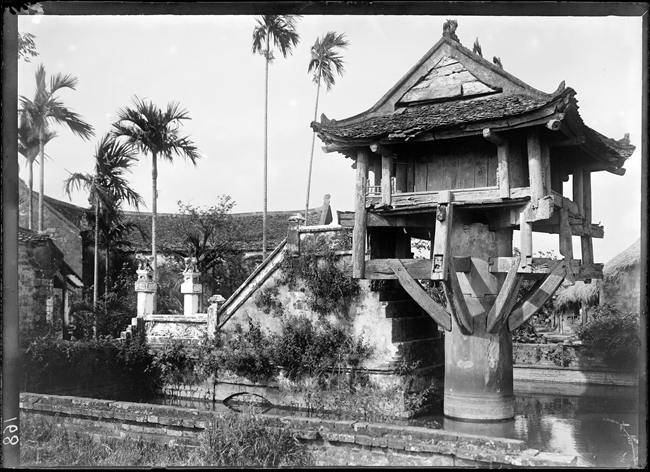
Brief introduction about One Pillar Pagoda
One Pillar Pagoda, also known as Mat Pagoda, Lien Hoa Dai, or Dien Huu Tu, is an ancient pagoda in Vietnam established during the time of King Ly Thai Tong. The pagoda was built during the Ly Dynasty on the territory of Thanh Bao hamlet in Quang Duc district, west of Thang Long’s Imperial Citadel. The pagoda is now located in the Ba Dinh neighborhood, in the park behind Ong Ich Khiem street, near to the complex of Ba Dinh Square and the Ho Chi Minh Mausoleum.
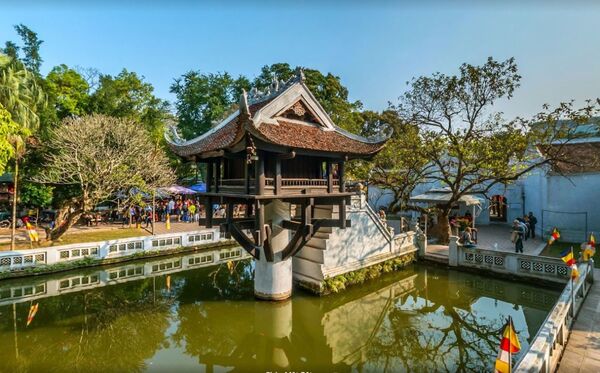
The majestic and artistic architecture of the temple
Opening time and ticket price to visit One Pillar Pagoda
Because it is part of the complex that includes Ba Dinh Square and Uncle Ho’s Mausoleum, the temple’s hours of operation are likewise determined by these two destinations. As a result, the temple will be open daily from 7 a.m. to 6 p.m. Each trip normally lasts between one and three hours.
The temple does not charge Vietnamese citizens admission to visit, worship Buddha, or worship. The ticket charge for visiting One Pillar Pagoda, especially for international tourists, is 25,000 VND per person.
Means and ways to move to the temple
The pagoda is located in the Ba Dinh area, adjacent to several popular tourist destinations, and is therefore quite easy to find. Visitors can arrive by personal means such as motorcycles or cars, or by taxi or motorbike taxi services. If you’re using the bus, look for routes that stop near the temple, such as lines 09, 22, 33, 45, and 50. All of the preceding lines terminate at No. 15A Le Hong Phong.
You can also reach One Pillar Pagoda by going north to the City Post Office and then taking the first exit at the roundabout to Dinh Tien Hoang Street. Turn left at DC Gallery to enter Hang Gai, then past Hang Bong to Xoi Cam and return to Dien Bien Phu. You should proceed down Dien Bien Phu street to the road that crosses Ong Ich Khiem and Hung Vuong.
In addition, there are a few alternative paths available to guests, including:
- Option 1: Giang Vo – Nguyen Thai Hoc – Hung Vuong.
- Option 2: Van Cao – Thuy Khue – Hung Vuong.
- Option 3: Ton Duc Thang – Chu Van An – Dien Bien Phu.
Important information to know about One Pillar Pagoda:
| Address | One Pillar Pagoda Street, Doi Can Ward, Ba Dinh District, Hanoi City |
| Open time | 7:00am – 6:00pm every day |
| Sightseeing ticket price | 25,000 VND/person |
| Tourist places nearby | Imperial Citadel of Thang Long, Hanoi Flagpole, Ho Chi Minh Mausoleum, Ba Dinh Square… |
Unique architecture of One Pillar Pagoda in Vietnam
One Pillar Pagoda in Vietnam is the pinnacle architectural masterpiece, filled with national cultural quintessence through the arts of design, sculpture, woodcarving, and painting. According to the Asian Records Organization, the pagoda was named “the temple with the most unique architecture in Asia” in 2012.
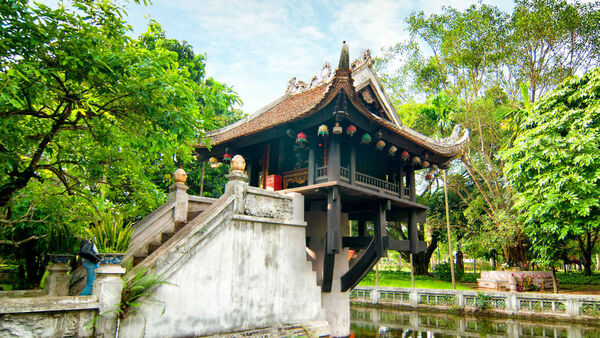
The concept of architecture is a flower that blooms on the water
The pagoda’s architecture is inspired by the image of a lotus flower blooming on the lake. Lotus is Vietnam’s national flower, a flower that represents nobility, sharing, and love, as well as a noble emblem of dignity. Lien Hoa Dai, Ho Linh Chieu, and the stairs to the main hall are all part of the total project.
Visitors to One Pillar Pagoda will experience the uniqueness of old architecture. The entire temple is built on top of a massive stone pillar. The temple resembles a lotus, is just approximately 3m2 broad, and is entirely composed of wood and roof. The old tile roof combines “Double Skill” – curving blade shape, with a dragon motif above. This design emphasizes majesty, divinity, strong intelligence, and human values.
When visitng this hundred-year-old antique temple, you must see the following areas:
Stairs leading to the main hall
Visitors must take 13 steps with a width of around 1 m to enter the temple. These steps were created during the Ly Dynasty and remain nearly intact to this day. Two rows of brick walls on both sides, in particular, include a stele introducing the temple’s history.
Altar and statue of Avalokiteśvara Bodhisattva
This is one of One Pillar Pagoda’s most dignified sections. The statue of Bodhisattva Avalokitesvara is located in the center of the Lotus Station, at the highest point. The statue’s feet are intricately crafted wooden lotuses painted with gold vermilion. Surrounded by flower vases and copper urns… not fussy, yet oozing a very distinct style and beauty.
Pagoda tree
The Bodhi tree is still regarded as a characteristic tree in Buddhism, displaying sacred and ancient beauty. The Bodhi tree at the temple was a gift from India’s President during President Ho Chi Minh’s visit. A stele beneath the tree says, “This Bodhi tree was originally from the Bodhi tree Shakyamuni Buddha attained enlightenment in India.” On the occasion of President Ho Chi Minh’s visit to India in February 1858, President Rajendra Prasad handed it to him.
Triple Gate
If you get the opportunity to visit One Pillar Pagoda, you should not miss Tam Quan Gate. This is essentially an enlargement project that was completed within the last few years. The gate is built in the same style as traditional Vietnamese communal houses and pagodas, with two stories and three aisles. The Three-way Gate also represents the three Buddhist perspectives.
Attractions near One Pillar Pagoda
The pagoda is close to some of Hanoi’s most famous landmarks. As a result, visitors can visit multiple sights in a single day. After seeing the pagoda, visitors can go to other tourist destinations such as Thang Long Imperial Citadel, Hanoi Flag Tower, Ho Chi Minh Mausoleum, Ba Dinh Square, etc. In addition, you can sample local specialties on the streets of the Old Quarter.
Things to note when visiting and exploring One Pillar Pagoda in Vietnam
- When attending the temple, wear modest clothing and avoid wearing shorts or skirts above the knee.
- Visitors should pay attention to the signs during their visit because the temple contains forbidden zones.
- Gently go about the temple grounds to prevent damaging the antique relics.
- Maintain the landscaping and general hygiene, and follow temple standards.
- Do not engage in illegal or superstitious behavior.
- Do not throw money into the lotus pond; instead, burn incense at the prescribed location.
- Keep track of the temple’s thanksgiving season.
With great values in terms of history, culture and architecture, Mot Cot Pagoda has become one of the most famous pagodas in Vietnam. Therefore, Mot Cot Pagoda is one of the “cannot – miss” destinations of Vietnam tours whenever tourists visit Hanoi city. People ever visited Vietnam in any kinds of tour from Vietnam discovery tours to Vietnam family tours or even Vietnam honeymoon Packages are surprised at the unique structure of Mot Cot Pagoda.
Read more:

